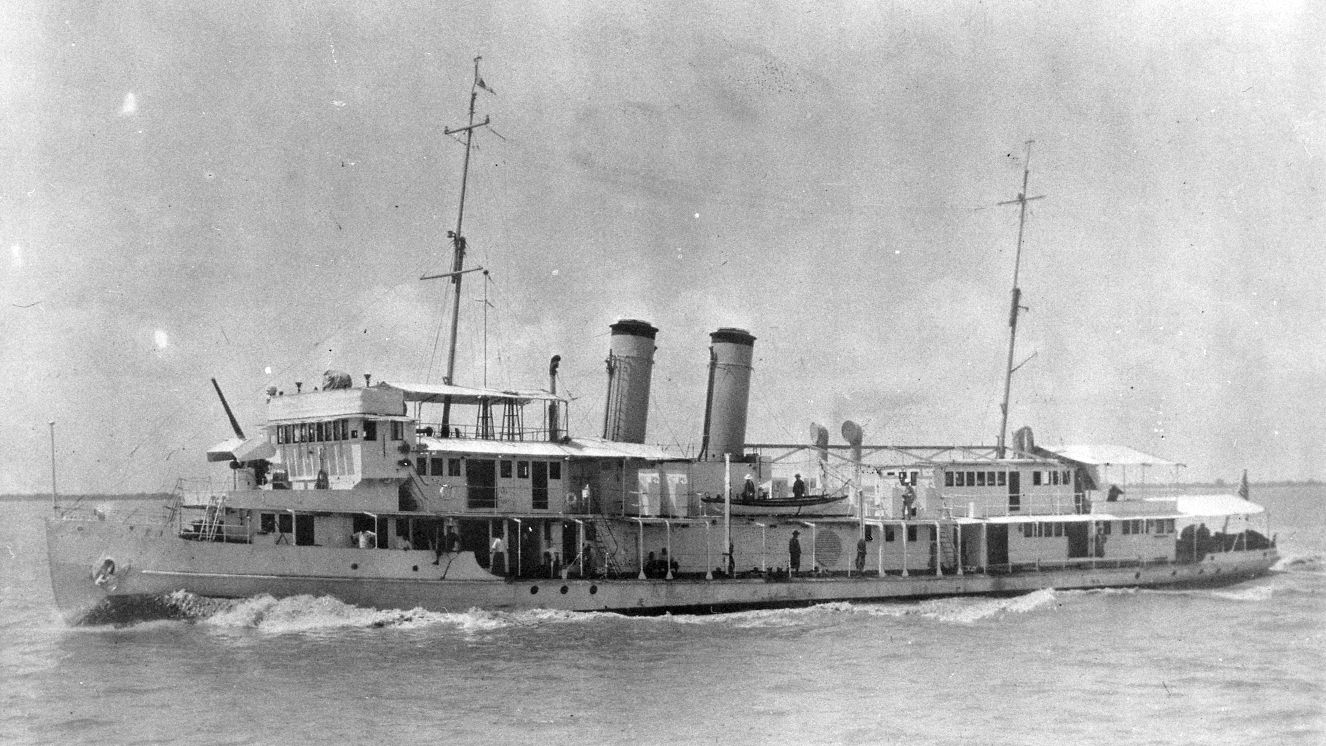MILITARY TO CIVILIAN RESUME: IN-DEPTH GUIDE & EXPERT TIPS

Introduction
When you’re ready to separate from the military and enter the civilian workforce, having a polished resume will be one of your greatest assets as you search for a new job. But depending on your years of service and what roles you fulfilled in the armed forces, the summary of your work history may need a little help to make it shine. We already know that those who have served our nation have skills and character beyond measure, but explaining those qualities to future employers can be a tough task sometimes. That’s why we’ve teamed up with Eric Horton to give you five essential tips that will help you write a badass military to civilian resume — a resume that will help you get your foot in the door, say goodbye to your combat boots and hello to your serious-yet-stylish work shoes.
First Steps to Success: Taking Charge of Your Choices
One of the most challenging things for some people transitioning out of the military is asking themselves what they WANT to do as opposed to what they were TRAINED to do. A career choice is a decision civilians face too, but for veterans who may have had many occupational choices made for them in the military, it may not be such an obvious first step. Eric Horton, a growth strategist for Digital Networking Professional Program, has first-hand experience helping veterans develop civilian careers. Horton, himself a veteran, says it’s important for military members to decide what they want to do, then make sure that career is supported where they live. “If you want to be a deep-sea fisherman and live in Arizona, that may not work out,” he explains. “Location determines career availabilities. Local wage surveys determine wages for companies.” Once a person has an idea of their post-military calling, a career coach like Horton can review what skills and training a person had in the military and demonstrate how those proficiencies will translate into civilian career qualifications.
Get Your VMET Documentation
Before you even type your name at the top of a new resume, get a copy of your Verification of Military Experience and Training (VMET) document. This information, provided from the Department of Defense, is available to all service members and veterans online through milConnect. To get your VMET documentation:
- Log in to milConnect.
- From the Correspondence/Documentation menu, choose DoDTAP (eForm and VMET).
- Select the VMET tab.
- Follow the onscreen instructions.
Your VMET file does two important things: First, it gathers all reported demographic, training and experience records in one place. Second, it describes your service occupations in civilian terms. So it’s like getting a head start on building your new resume. Within your VMET info, you’ll need to look for experience relevant to your career goals. Transfer that relevant information to your resume, job applications and other search materials, then edit as needed to fit the qualifications of the opportunities you’ll be looking for.
How to Write a Badass Military to Civilian Resume

1. Translate Your Skills to “Civilianese”
You could be ending your career in the armed forces with years of service, experiences around the world and honors that highlight your many successes and sacrifices. Unfortunately, few civilians understand even the most basic ranks and responsibilities within the military, especially among different branches. It’s your first task of any new job to decipher military terminology into civilian-world skills. Instead of “officer in charge,” use words like “managed” or “coordinated.” Instead of “private” or “seaman apprentice,” say “production worker” or “team member.” Explain your actual responsibilities in general terms that others can imagine, for example “heavy equipment operator” with “safety coordination.” Leave the alphabet soup of military acronyms in the can. Horton recommends this downloadable PDF that can help you find a good civilian translation of military terminology when it comes to occupational titles.
Think About Your Technical Skills
Whether you were a mechanic, engineer, computer technician, medic, food service, public affairs officer or anything else in the military, those skills will be in demand after your service. Though you may have had a specialized focus on repairing aircraft or cooking for huge celebrations on post, you can also describe those skills in broader terms, such as mechanical repair or catering for crowds. Most tasks also require some form of time-management skills and budgeting and quality-control oversight, things you might not have considered adding to your resume.
Think About Your Intangible Skills

2. Cover the Essentials of a Resume
While you’ll be making your resume reflect your personal strengths, you’ll need to start with the basics, including these:
- Contact information: Include your name, address, a phone number and email address near the top of the resume so it can be easily accessed.
- Employment objective or job target: In one or two sentences, explain what kind of job you’re looking for in general and what makes you uniquely qualified. Make sure to emphasize how you would benefit the employer, not how they would benefit you.
- Summary of qualifications: This can be a very brief, bulleted section just below the objective to highlight your experience, certifications, etc., that qualify you for the job.
- Employment history: This format will vary depending on the type of resume you choose (see below).
- Education and training: List colleges, schools or special training you completed during your service. The type of skills you may have learned are more important than the actual dates of attendance.
- Special skills: Include any computer skills, foreign languages or other relevant abilities that will set you apart.

3. Choose a Resume Style to Match Your “Work” History
These two typical styles of resumes can help highlight your skill sets and put your time in the service into perspective for civilian human resources reps.
1. Chronological Resume
Most people choose this format, listing their most recent employment history first, then progressing backward, with job titles and dates. You should include a brief description of your responsibilities for each position. This style is best for those wanting to highlight their work history, specifically advancement in their career, Horton says.
2. Functional
This style may be better for veterans, military spouses or for anyone with gaps in their career record. Focus is placed on your skills and accomplishments, instead. You may follow that section with a general history of your employment. This style is also suited to people changing industries, Horton says.

4. Make it Personal — But Not Too Personal
Here’s where you can add a little humanity to your resume. Think more of focusing your personality on the target job, not providing TMI.
Include Your Accomplishments
Achievements within your area of responsibility are great ways to tout yourself. Numbers, something (most of us) can all understand, can help describe how you increased productivity or reduced expenditures, etc.
Include Volunteer Activities — If Relevant to the Job
Examples of your willingness to help others will add to your character.
Fine-Tune the Resume for the Application
For some opportunities, you might want to slightly change the wording of your skills or experience to reflect the requirements a potential employer is looking for. We don’t mean bluffing any skills here, more like buffing what you already have.
Don’t Include Non-Job-Related Personal Info
Details such as your marital status, religious affiliation, physical attributes, pregnancy, etc., are unnecessary because they legally cannot be used

5. Add a Powerful Cover Letter
Be prepared to include a cover letter with your resume, whether submitting these physical documents in person or digital versions electronically.
What to Put In a Cover Letter
- Address it to the person in charge of hiring or the department you’re seeking a job in.
- Briefly explain why you’re the best candidate for the position and how you’d specifically help the company.
- Keep it to one page. Sometimes less, in succinct sentences, is more.
- Follow up your application to show your interest in the opportunity.
Conclusion
Looking for employment after leaving our armed forces can be one of the most challenging parts of the transition to civilian life. But explaining your previous military experience, even if you’re a veteran who was discharged yesterday or many years ago, can set you in a higher class from the crowd of candidates for any job. “You get 10 to 12 weeks of training to enter the service and conform to the military lifestyle. When you transition from service, you get five days of non-mandatory guidance on how to be a civilian post-service,” Horton says. “It’s one of the hardest things to do: transition from service.” But facing that challenge head on — and helping the vast population of civilians understand your military service — can lead to many rewarding job opportunities. Many employers will appreciate the unique technological, mechanical and physical knowledge you can bring to their workplace, not to mention the mental fortitude and pride in service to others. Need some extra help honing on your skills and possibly learning new ones? Check out our blog 3 Veteran Charities You Need to Know About For Jobs and learn how these military, veteran and milspouse focused charities can help you land not just your next job but your DREAM job! Looking for specific military to civilian resume examples or more veteran resume help? The U.S. Department of Labor, through Veterans.gov, offers assistance catered to former active-duty members, including a skills translator, resume-builder, interest profiler and more. You can also visit employment search websites such as Indeed, Monster and LinkedIn, which provide additional advice and visual templates for military-to-civilian job searches. Horton says the premium version of Skillsyncer.com (free for a year for veterans) and the resume-builder on Indeed (with its ability to customize your profile URL) will be especially valuable tools. Whether you’re planning to separate from the military soon and will need a full-time job or you’re a veteran looking to add some part-time income, a well-crafted resume will help you put your best foot forward — no matter what kind of shoes you’re walking in now. What to read next: What Really are the Best Jobs for Veterans…and How Do You Get Them?

HOT TIP: Now that you are armed to the keyboard with your newly learned resume writing skills — your next mission it’s to track down and acquire a new job! Head on over to MyBaseGuide’s job portal to start your search. There are even work-from-home opportunities available!
More about Eric Horton
Eric Horton is a Growth Strategist by day, Transition Expert by night, SEO People Engineer, and Co-Founder of LinkedInMusicCity.



